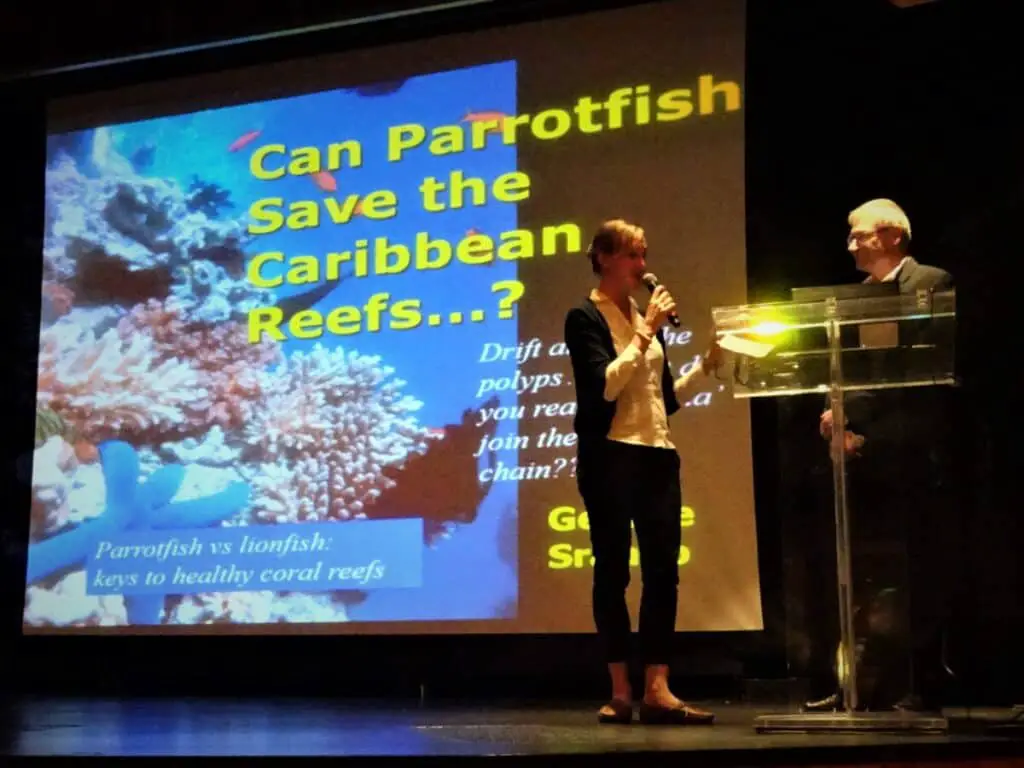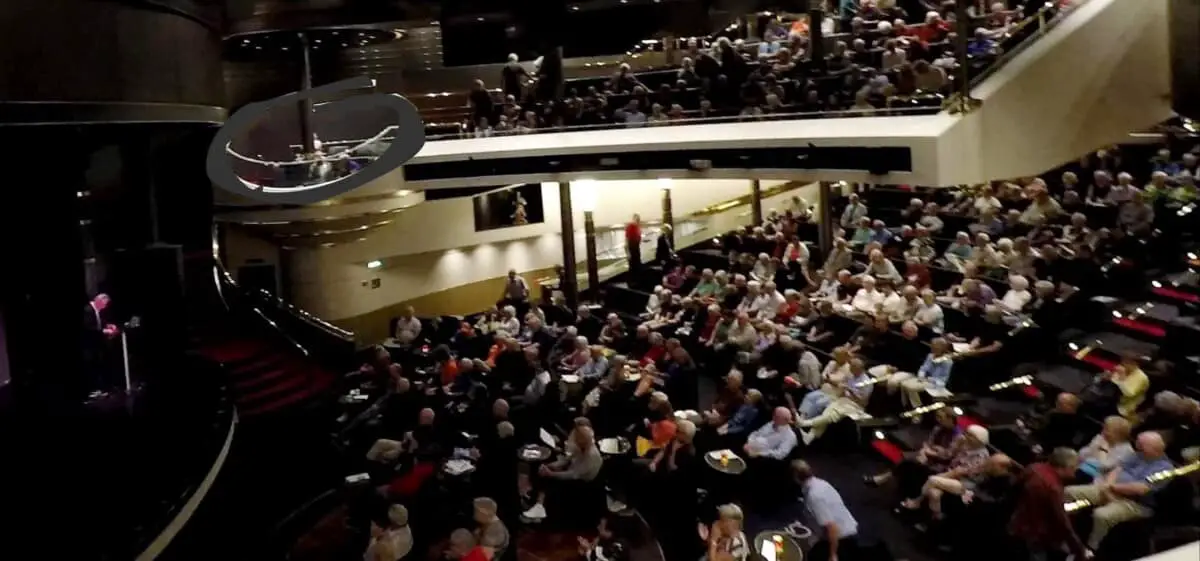As a frequent guest speaker, I have given hundreds of presentations to audiences of 100-300 people or more. In this article I want to share my top tips for giving an awesome travel presentation that audiences of all sizes will find engaging and memorable.
Many of us return from our travels with memory cards filled with hundreds or thousands of irreplaceable photos and videos. But then what? What do you do with all those great images? Hopefully, this article will motivate you to share those images before they get stashed away in a dusty cupboard. Let me show you how to prepare an awesome presentation that will entertain your friends and family… and perhaps even larger audiences. Here are my 5 top tips:
- Make it personal and be authentic
- Tell stories rather than bombarding them with facts and information
- Move along at a good pace
- Throw in surprising twists and turns
- Set out to amaze your audience
My top 5 tips
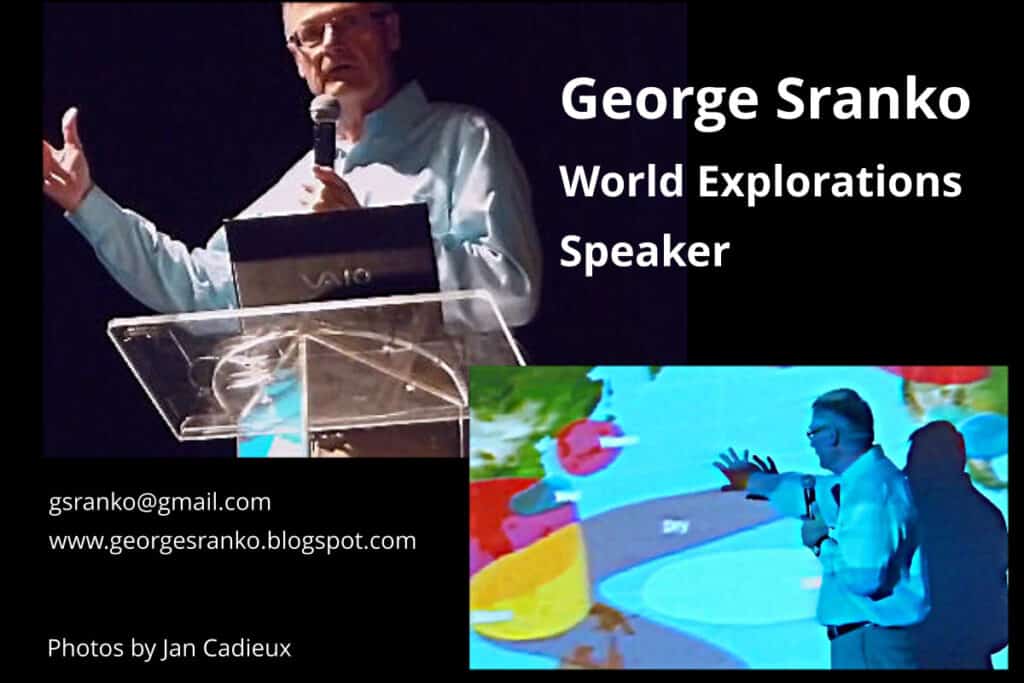
1. Make it personal and be authentic
Let who you are shine through and speak from your authentic self. This isn’t too difficult in front of a small group of friends and family, but it can be challenging when you are faced with a large audience and want to make a positive impression. The natural tendency in front of a large group is to tense up and to read from the bullet points on your slides.
The main thing is to be yourself. If you enjoy humor, take advantage of naturally funny events or observations in your presentation. If you tend to be more serious, don’t try to insert one-liners or funny jokes. Humor works if it is natural. You can add dramatic flair or even make it suspenseful, building to a climax, if that works for you. Just don’t try to force yourself to be someone you aren’t comfortable with in your own skin.
Weave in a bit about yourself, how you became interested in your topic or your travel destination. What is unique and interesting about the people, places, or subjects in your photos? Take advantage of any mishaps or missteps from your travels by using them as the basis for lessons learned. If you enjoy telling your story and relating your adventures, your audience will enjoy taking the trip with you!

2. Tell stories rather than bombarding them with facts and information
This is the secret sauce that will make your presentations engaging and memorable. We are hard wired to follow stories and to remember storylines from the time our ancestors sat munching on kudu around the evening campfire. Our lives depended on learning the lessons brought to life through stories. How to avoid getting killed by a kudu kick makes for an entertaining lesson. Stories form the basis of culture and help us understand how humans have managed to survive and thrive since emerging out of the African savannah roughly 150,000 years ago.
Typically, we have an advantage when preparing and giving a presentation based on our travel experiences. Travel is full of good stories and you can relate events in chronological order or by theme. But what if you don’t have a personal story to tell based on your exploits? Dive deeper into the background of your subject matter.
I often give science-based presentations to general audiences of hundreds of people in the main theaters of cruise ships.
One of my favorite topics is plate tectonics. How do you make geology and the unseen movements of entire continents interesting? Well, there are some fascinating stories related to the scientists and individuals who have developed our current understanding of how our planet works.
People like Doc Ewing, the Columbia University prof who liked explosions. During the 1940s and 50s, he and his researchers made several expeditions across the Atlantic while throwing explosives overboard and taking thousands of sonar readings. Then there’s Marie Tharp who was not allowed on the ships. Working with pen, ink, and ruler, she painstakingly drew the sea bottom, degree by degree, described by those thousands of sonar readings.
In 1977, Marie Tharp published a remarkable map showing the physiography of the world’s ocean floor, still considered accurate to this day.
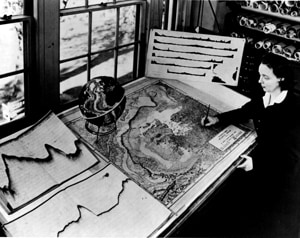
Photo by Columbia University
Stories about people and places engage audiences and help to capture attention. Even when you’re talking about something as dry as the earth’s crust!
3. Move along at a good pace
Keep your presentation moving along without getting stranded on one image for 10 minutes. I personally aim for 90-100 PowerPoint slides for a 45 minute presentation. This works out to roughly two slides per minute. There will be exceptions, of course! There are some images that have a particularly engaging back story that may be worthy of two or three minutes. But these will be the exception.
This is the visual equivalent of having a good editor. Experienced video editors will know what I mean. Watch a good movie and you will be surprised at the number of times the scene cuts from one person to another or to a new angle. Nearly all of us have become accustomed to the quick pace of top productions on our ubiquitous online streaming platforms. Like it or not, we are competing with quick-paced productions as we give our own presentations — even if we have a captive audience!
4. Throw in surprising twists and turns
I like to spice things up with surprising images or curve balls that come out of nowhere. For example, you can add intrigue by showing an extreme close-up to keep your audience guessing. An elephant’s eye. The individual feathers of a peacock’s tail. One small segment of a zebra’s stripe. The torch on the Statue of Liberty. Then zoom out to show the entire animal — or iconic building or famous location.
I like to pepper my talks with humorous images. People love to see funny looking animals and you can find the most amazing expressions to illustrate any point.
The trick is to find images that you can use copyright free or under creative commons licensing. Try this now… google ‘funny animals.’ Once the search results come up, click on ‘images,’ then ‘tools,’ and then ‘usage rights’ – select ‘Labelled for Reuse.’ This will show you tons of funny expressions that you can use in your presentations.
Another great source for copyright free images is Unsplash.com with an incredible array of high quality, high resolution photos.

If you have a photo off the internet and are uncertain about its origin you can try to find the source by going to www.images.google.com and clicking on the camera icon that shows in the search bar. This will allow you to “search by image” by uploading the file. For the pug photo above, google images showed that hundreds of websites are using this image, and I also found the original photographer, Charles Deluvio.

Tantalize and surprise your audience – add intrigue — and they’ll pay attention.
5. Set out to amaze your audience
There’s nothing wrong with crafting your presentation to make it as amazing and entertaining as possible. In fact, let me argue that you would be doing your audience a big disservice by keeping it dry as an old creek bed.
Every time you deliver a public presentation you are taking on the role of entertainer. Research your topics, unravel hidden connections, delve deeper than the superficial. Set out to entertain AND amaze your audience.
While cruising through the scenic Chilean fiords in South America, I recently gave a presentation on glaciers. The surroundings were dramatic and awe-inspiring as our cruise ship traversed the narrow fiords between wooded slopes on either side, jagged peaks towering overhead, and icy blue glaciers gushing rivers of fresh meltwater onto exposed bedrock and into the sea.
The thing about glaciers is that we never really think about the amazing properties of water and ice, and how they have created the conditions for life on this planet as we know it.
Ice is less dense than the water. Water is the only non-metallic substance that expands when it freezes, allowing ice to float on water. This might not sound exciting, so it became my job as the presenter to make it exciting by clarifying the implications.
“What if…” I queried my audience, “solid ice was denser than water?” It would sink and we would have a different planet. Imagine a world were ice sank to the bottoms of lakes and oceans and never thawed out. This would be a frozen planet and it is likely we wouldn’t be here as a species in the first place.
Our very existence on this tiny blue planet is made possible by the unique properties of water and the fact that ice floats.
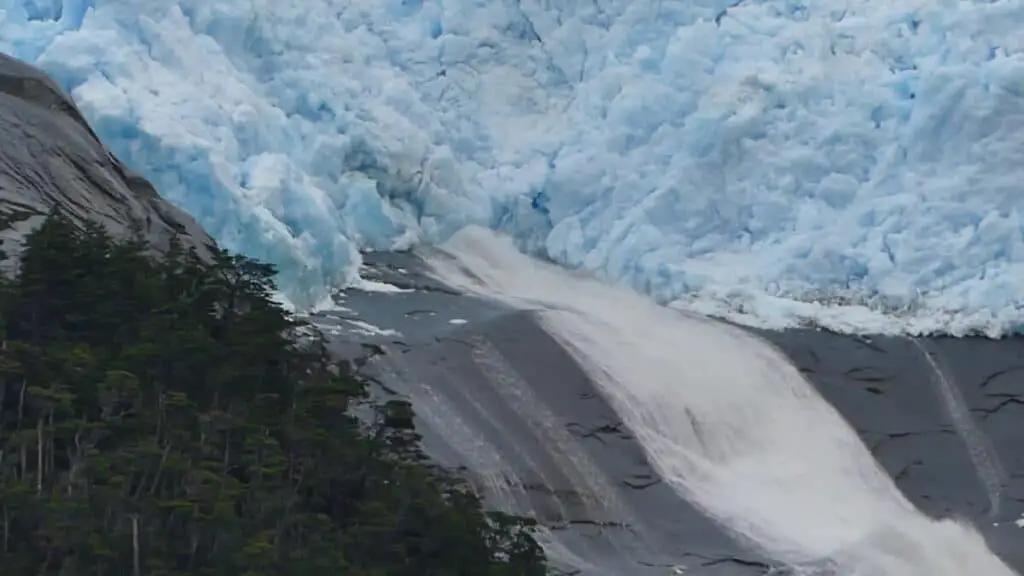
Makes you think twice as you gaze upon a photo of startling blue glacial ice and thundering waterfalls superimposed against the dark bedrock of the Chilean mountains.
Good luck with your presentations. Grab their attention, tell some stories and get ready to amaze them!! A good title can help.
